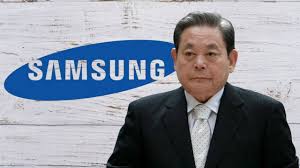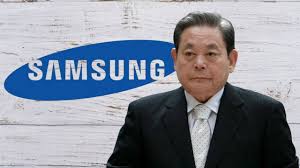
South Korea’s top court has finally put to rest the decade‑long legal saga surrounding Samsung Electronics Chairman Lee Jae‑yong, clearing him of all charges in the controversial 2015 merger case. With the Supreme Court’s ruling rendering the acquittal irreversible, Samsung stands on the cusp of a new era—one defined by unencumbered leadership, accelerated investment in next‑generation technology, and renewed corporate momentum. For a conglomerate that has grappled with constrained governance and stymied strategic initiatives, the verdict represents more than just personal relief for Lee: it signals a broader inflection point for Samsung’s global ambitions.
Days after the verdict, Samsung’s corporate offices in Seoul hummed with activity. In boardrooms once clouded by uncertainty, executives are now huddling over blueprints for ambitious chip fabs, expanded AI research centers, and refreshed smartphone launches. For investors, analysts, and employees alike, the court’s decision removes the lingering question of leadership legitimacy—and with it, the specter that every major decision might be undone or delayed by further appeals.
Leadership Unchained: Lee’s Return to the Helm
Since his initial imprisonment on separate bribery charges in 2017, Lee’s capacity to steer Samsung’s strategic course had been hamstrung. Although he was officially appointed chairman in 2022, a legal injunction barred him from board meetings, forcing the company to defer to an interim leadership team. That arrangement left long‑term projects—such as the multibillion‑dollar foundry expansion and a global pivot toward artificial‑intelligence semiconductors—in a state of perpetual limbo.
With the Supreme Court’s final ruling, Lee can now fully reengage. Within days, he held high‑level meetings with Samsung’s semiconductor chiefs, greenlighting accelerated construction schedules in Texas and Pyeongtaek. He also resumed negotiations with international partners: industry sources report that Lee has reached out personally to key figures at U.S. technology firms, including a working dinner with AI pioneer Sam Altman, to solidify alliances in software and hardware integration.
Internally, morale appears poised for an upswing. Senior analysts at major brokerages note that Lee’s hands‑on management style—once curtailed—will now blend with a more stable governance structure, helping Samsung move beyond merely defending market share to proactively capturing new segments. From revamping executive committees to launching cross‑division task forces, Lee’s return promises to inject a sense of urgency into projects that had been relegated to the sidelines.
Accelerating AI and Chip Dominance
Samsung’s semiconductor division has been in the throes of stiff competition. While the memory‑chip business remains an industry bellwether, the foundry arm has lagged behind Taiwan’s TSMC in advanced node capabilities. Coupled with geopolitical supply‑chain shifts and U.S. export controls on high‑end chipmaking equipment, the window for Samsung to catch up is narrowing.
In board presentations prepared for Lee’s leadership team, internal forecasts underline the stakes: by 2027, the global AI accelerator market could exceed $180 billion, with demand for high‑bandwidth memory and specialized processors reaching unprecedented levels. Samsung’s renewed focus will target these high‑growth segments. Plans include tripling R\&D spending on 3‑nanometer and 2‑nanometer process technologies, expanding fabrication capacity in Korea’s Gyeonggi province, and fast‑tracking collaborative design centers with cloud‑service providers in Europe and North America.
Beyond chips, Samsung’s consumer‑electronics division is gearing up to debut its latest Galaxy flagship, with embedded AI features that leverage on‑device neural processing. The device roadmap has been realigned to support faster integration of machine‑learning models tailored for everything from real‑time translation to predictive battery optimization—capabilities that demand tighter coordination between hardware, firmware, and cloud services. Lee’s unshackled oversight is expected to compress product‑development cycles, enabling Samsung to respond more nimbly to competitor advances and shifting consumer preferences.
Governance Windfall and Market Response
Financial markets reacted with cautious optimism. Samsung Electronics shares ticked upward in the days following the verdict, as institutional investors celebrated the removal of a material governance risk. Credit‑rating agencies have signaled the possibility of a rating upgrade, citing the resolution of contingent liabilities and the prospect of clearer capital‑allocation policies.
Corporate‑governance advocates view the outcome as a double‑edged sword. On one hand, Lee’s restoration of authority may streamline decision‑making and reinforce accountability among senior executives. On the other, it raises questions about checks and balances within family‑led conglomerates—a perennial concern in South Korea’s chaebol ecosystem. In response, Samsung has pledged to strengthen its compliance and audit committees, while enhancing disclosure practices around related‑party transactions.
Broader industry bodies have applauded the verdict as stabilizing for the national economy. The Korea Employers Federation noted that unobstructed leadership at Samsung—one of South Korea’s largest employers and exporters—will bolster confidence among global partners and help preserve the nation’s edge in critical industries. Meanwhile, rival chipmakers are bracing for intensified competition, recognizing that a fully empowered Samsung could accelerate capacity expansions and price‑technology inflections across the market.
Just as significant are the corporate alliances Lee is now free to pursue. Prior overtures toward automotive‑industry collaborations, previously stalled by board‑level reticence, are being revived. Talks with leading electric‑vehicle manufacturers have resurfaced around developing specialized infotainment systems and in‑car AI assistants, areas where Samsung’s display and sensor expertise could dovetail with its semiconductor prowess.
A Pivot from Legal Battles to Innovation
For more than a decade, headlines surrounding Samsung were dominated by courtroom drama: allegations of stock manipulation, accusations of accounting fraud in the 2015 merger with Cheil Industries, and recurring probes into the company’s succession dealings. With the legal dust now settled, Samsung’s narrative can pivot to innovation and market leadership.
Externally, government officials in Seoul have taken note. Policy discussions on semiconductor incentives, tax credits for R\&D, and regulatory support for joint ventures are expected to proceed without the backdrop of uncertainty that had previously colored negotiations. In international arenas—particularly amid U.S. pushes to onshore chip production—Samsung is now positioned to leverage its full executive bandwidth, negotiating subsidies and partnerships on equal footing with other global titans.
Employees across Samsung’s sprawling campuses are likewise preparing for a cultural shift. Leadership development programs are being relaunched, designed to cultivate talent pipelines that extend beyond the Lee family’s direct lineage. In a symbolic move, Lee has endorsed expanded board representation from outside directors with deep technology‑sector experience, signaling a willingness to embrace broader perspectives in steering strategy.
As Samsung charts its course forward, the company’s challenges remain formidable: integrating advanced AI capabilities into consumer‑facing products, regaining momentum in the semiconductor foundry race, and maintaining supply‑chain resilience amid geopolitical headwinds. Yet with its chairman restored to full authority, the company can refocus on long‑term vision rather than navigating recurrent legal detours.
In the coming months, investors and industry watchers will look for tangible signs of change: a revamped semiconductor roadmap, strategic alliances sealed under Lee’s direction, and demonstrable progress in next‑generation device launches. If realized, Samsung’s post‑verdict era could mark one of the most consequential turnarounds in the global technology landscape—underscoring how legal clarity can translate into renewed corporate dynamism and innovation leadership.
(Source:www.channelnewsasia.com)
Days after the verdict, Samsung’s corporate offices in Seoul hummed with activity. In boardrooms once clouded by uncertainty, executives are now huddling over blueprints for ambitious chip fabs, expanded AI research centers, and refreshed smartphone launches. For investors, analysts, and employees alike, the court’s decision removes the lingering question of leadership legitimacy—and with it, the specter that every major decision might be undone or delayed by further appeals.
Leadership Unchained: Lee’s Return to the Helm
Since his initial imprisonment on separate bribery charges in 2017, Lee’s capacity to steer Samsung’s strategic course had been hamstrung. Although he was officially appointed chairman in 2022, a legal injunction barred him from board meetings, forcing the company to defer to an interim leadership team. That arrangement left long‑term projects—such as the multibillion‑dollar foundry expansion and a global pivot toward artificial‑intelligence semiconductors—in a state of perpetual limbo.
With the Supreme Court’s final ruling, Lee can now fully reengage. Within days, he held high‑level meetings with Samsung’s semiconductor chiefs, greenlighting accelerated construction schedules in Texas and Pyeongtaek. He also resumed negotiations with international partners: industry sources report that Lee has reached out personally to key figures at U.S. technology firms, including a working dinner with AI pioneer Sam Altman, to solidify alliances in software and hardware integration.
Internally, morale appears poised for an upswing. Senior analysts at major brokerages note that Lee’s hands‑on management style—once curtailed—will now blend with a more stable governance structure, helping Samsung move beyond merely defending market share to proactively capturing new segments. From revamping executive committees to launching cross‑division task forces, Lee’s return promises to inject a sense of urgency into projects that had been relegated to the sidelines.
Accelerating AI and Chip Dominance
Samsung’s semiconductor division has been in the throes of stiff competition. While the memory‑chip business remains an industry bellwether, the foundry arm has lagged behind Taiwan’s TSMC in advanced node capabilities. Coupled with geopolitical supply‑chain shifts and U.S. export controls on high‑end chipmaking equipment, the window for Samsung to catch up is narrowing.
In board presentations prepared for Lee’s leadership team, internal forecasts underline the stakes: by 2027, the global AI accelerator market could exceed $180 billion, with demand for high‑bandwidth memory and specialized processors reaching unprecedented levels. Samsung’s renewed focus will target these high‑growth segments. Plans include tripling R\&D spending on 3‑nanometer and 2‑nanometer process technologies, expanding fabrication capacity in Korea’s Gyeonggi province, and fast‑tracking collaborative design centers with cloud‑service providers in Europe and North America.
Beyond chips, Samsung’s consumer‑electronics division is gearing up to debut its latest Galaxy flagship, with embedded AI features that leverage on‑device neural processing. The device roadmap has been realigned to support faster integration of machine‑learning models tailored for everything from real‑time translation to predictive battery optimization—capabilities that demand tighter coordination between hardware, firmware, and cloud services. Lee’s unshackled oversight is expected to compress product‑development cycles, enabling Samsung to respond more nimbly to competitor advances and shifting consumer preferences.
Governance Windfall and Market Response
Financial markets reacted with cautious optimism. Samsung Electronics shares ticked upward in the days following the verdict, as institutional investors celebrated the removal of a material governance risk. Credit‑rating agencies have signaled the possibility of a rating upgrade, citing the resolution of contingent liabilities and the prospect of clearer capital‑allocation policies.
Corporate‑governance advocates view the outcome as a double‑edged sword. On one hand, Lee’s restoration of authority may streamline decision‑making and reinforce accountability among senior executives. On the other, it raises questions about checks and balances within family‑led conglomerates—a perennial concern in South Korea’s chaebol ecosystem. In response, Samsung has pledged to strengthen its compliance and audit committees, while enhancing disclosure practices around related‑party transactions.
Broader industry bodies have applauded the verdict as stabilizing for the national economy. The Korea Employers Federation noted that unobstructed leadership at Samsung—one of South Korea’s largest employers and exporters—will bolster confidence among global partners and help preserve the nation’s edge in critical industries. Meanwhile, rival chipmakers are bracing for intensified competition, recognizing that a fully empowered Samsung could accelerate capacity expansions and price‑technology inflections across the market.
Just as significant are the corporate alliances Lee is now free to pursue. Prior overtures toward automotive‑industry collaborations, previously stalled by board‑level reticence, are being revived. Talks with leading electric‑vehicle manufacturers have resurfaced around developing specialized infotainment systems and in‑car AI assistants, areas where Samsung’s display and sensor expertise could dovetail with its semiconductor prowess.
A Pivot from Legal Battles to Innovation
For more than a decade, headlines surrounding Samsung were dominated by courtroom drama: allegations of stock manipulation, accusations of accounting fraud in the 2015 merger with Cheil Industries, and recurring probes into the company’s succession dealings. With the legal dust now settled, Samsung’s narrative can pivot to innovation and market leadership.
Externally, government officials in Seoul have taken note. Policy discussions on semiconductor incentives, tax credits for R\&D, and regulatory support for joint ventures are expected to proceed without the backdrop of uncertainty that had previously colored negotiations. In international arenas—particularly amid U.S. pushes to onshore chip production—Samsung is now positioned to leverage its full executive bandwidth, negotiating subsidies and partnerships on equal footing with other global titans.
Employees across Samsung’s sprawling campuses are likewise preparing for a cultural shift. Leadership development programs are being relaunched, designed to cultivate talent pipelines that extend beyond the Lee family’s direct lineage. In a symbolic move, Lee has endorsed expanded board representation from outside directors with deep technology‑sector experience, signaling a willingness to embrace broader perspectives in steering strategy.
As Samsung charts its course forward, the company’s challenges remain formidable: integrating advanced AI capabilities into consumer‑facing products, regaining momentum in the semiconductor foundry race, and maintaining supply‑chain resilience amid geopolitical headwinds. Yet with its chairman restored to full authority, the company can refocus on long‑term vision rather than navigating recurrent legal detours.
In the coming months, investors and industry watchers will look for tangible signs of change: a revamped semiconductor roadmap, strategic alliances sealed under Lee’s direction, and demonstrable progress in next‑generation device launches. If realized, Samsung’s post‑verdict era could mark one of the most consequential turnarounds in the global technology landscape—underscoring how legal clarity can translate into renewed corporate dynamism and innovation leadership.
(Source:www.channelnewsasia.com)














